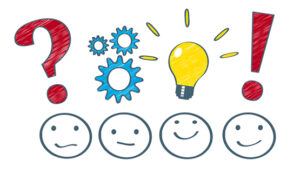Due to the impact of COVID-19, social media has recently been increasingly used as support tools for online learning. According to my learning experience, I use social media to communicate with classmates and teachers during the online class and use social media to obtain information and learning materials. Moreover, social media provides a platform for discussion and group discussions in online classes, and communication is not limited to face-to-face. One of the significant advantages of social media in education is to provide distance learning opportunities (Willbold, 2019). Therefore, social media facilitates our online education and helps us communicate and share remotely.
Social media helps to learn, but users need to be aware of some shortcomings (Orlanda-Ventayen et al., 2017). Social media has become a part of life for teenagers, and social media has affected many aspects of teenagers’ lives. Social media improves student cooperation’s quality and speed; however, some useless blogs may affect young people who may become violent and adopt certain inappropriate behaviours (Siddiqui & Singh, 2016). Therefore, I think social media have a negative impact on young people. First of all, the misunderstanding of information can affect the behaviour and think of young people. Teenagers can easily obtain all kinds of information on social media, but social media also includes some information that is not conducive to the healthy growth of young people. Young people are in the growing stage and cannot judge and understand specific information completely, so the wrong understanding of information may have a negative impact on young people’s thinking. If young people are not correctly guided to understand this information, it will affect some of their behaviour and thinking.
Secondly, overuse of social media software may affect the physical and mental health of young people. One aspect is the impact on the health of young people. Overuse of social media can affect young people’s rest time and thus affect their health. The other is the impact on the mental health of young people. Social media reduces the face-to-face communication between young people and their family and friends. For a long time, these young people have become autistic and do not know how to communicate with others. Besides, because social media can easily retrieve information, young people rely on learning from others’ experience and knowledge, then lack practical skills and self-learning abilities. Young people’s reliance on social media has reached the level of lack of social media, making young people unable to consider their growth direction, and excessive use of social media leads to addiction (Singh et al., 2017). Therefore, being social media safe is important for young people.
This inquiry project is based on the BC’s curriculum of Physical and Health Education grade 7. The Physical and Health Education (PHE) aims to train well-educated citizens who have the knowledge, skills and understanding they need to be safe, active and healthy citizens throughout their lives. (Government of British Columbia, n.d.). According to the purpose of this course, it is important for students to have a deep understanding of social media and positively apply social media to their lives. Moreover, I think the process of inquiring about the safety of social media can help students deepen their understanding of their own health and self-awareness. Goodyear mentioned that for social media to provide effective support, it is important to be aware of the potential risks of using social media to the health and well-being of young people. Therefore, young people should correctly understand the pros and cons of social media and learn to use social media scientifically in life and study.

The key questions of being social media safe:
- What is social media?
- What is the status of social media in life and learning?
- What is the relationship between social media and social responsibility?
- How to make social media positive support for learning?
- What is the right way to use social media?
- What should students know about their rights as a social media user?
- How does social media affect our lives and studies, as well as our physical and mental health?
I think social media is not only related to our lives and studies, but social media is also related to social responsibility to a certain extent. From the perspective of social media users, social media as a public communication platform, social media users with a sense of social responsibility should share true and reliable information and create a positive communication environment. Therefore, I will understand social media safe from the perspective of social responsibility and understand how social responsibility affects social media use. Moreover, social media becomes a powerful tool to increase social awareness (Jwain, 2020). Therefore, I will deep understand social media safe from the perspective of personal responsibility and social awareness.
As one of the mainstream social media, TikTok is becoming more and more popular among teenagers. As a user of TikTok, I think this application has established a platform for us to share with others, and we can also express ourselves on it. However, like other social media, TikTok negatively affects teenagers. Recently, much news about teenagers being scammed on TikTok in China, and these teenagers mistakenly believe in strangers because of their lack of judgment. Therefore, in this project, I will focus on TikTok.